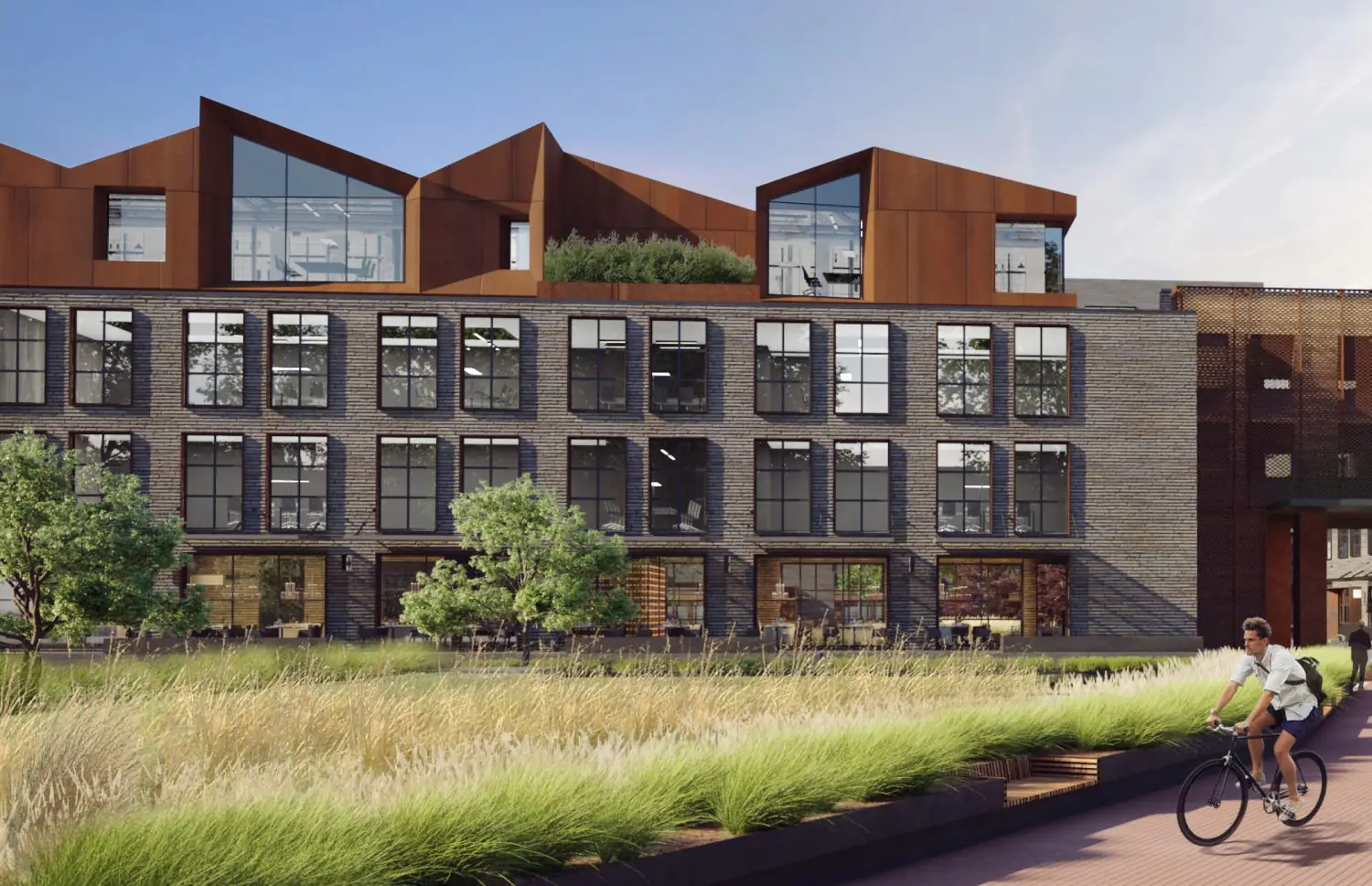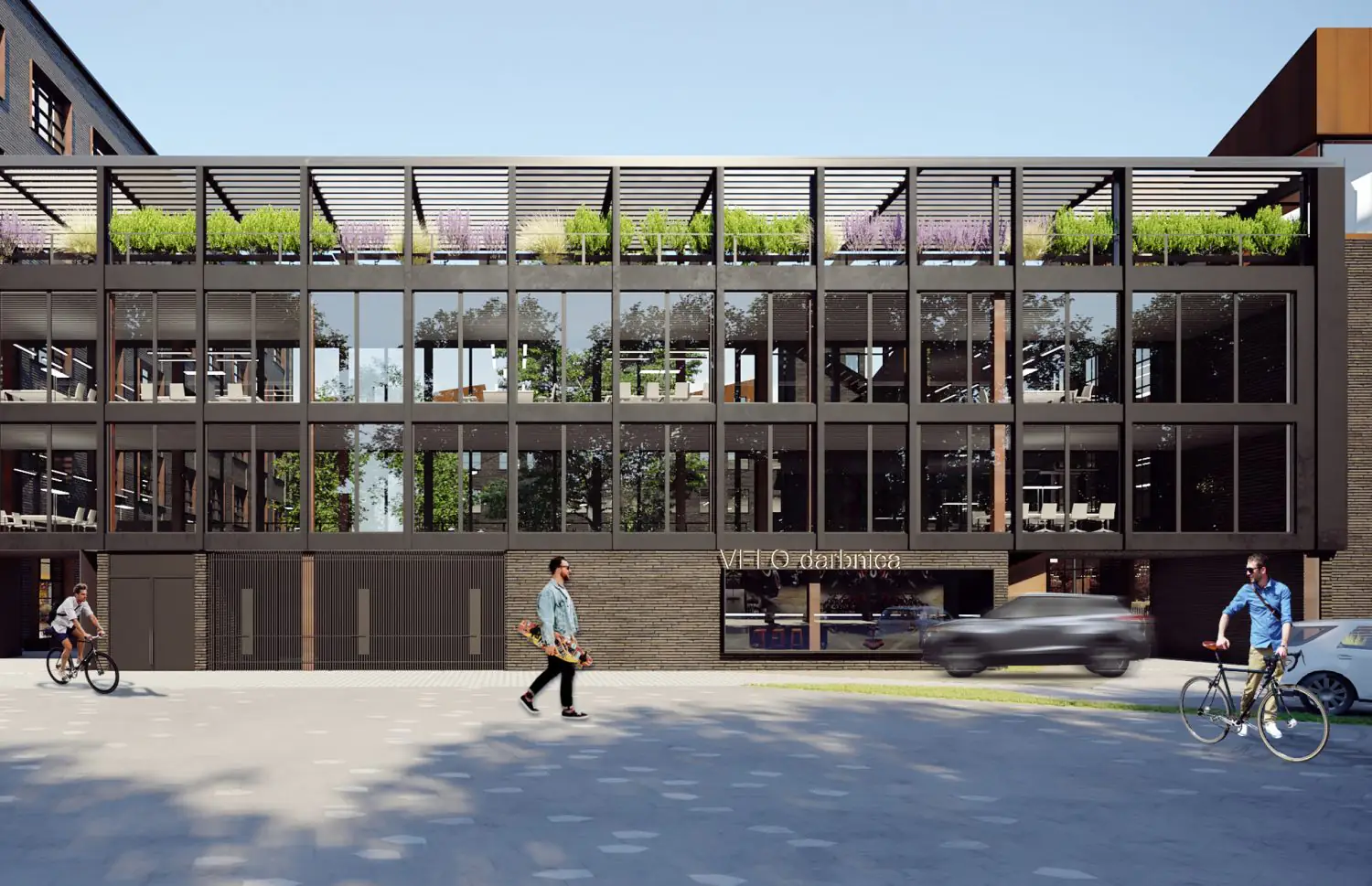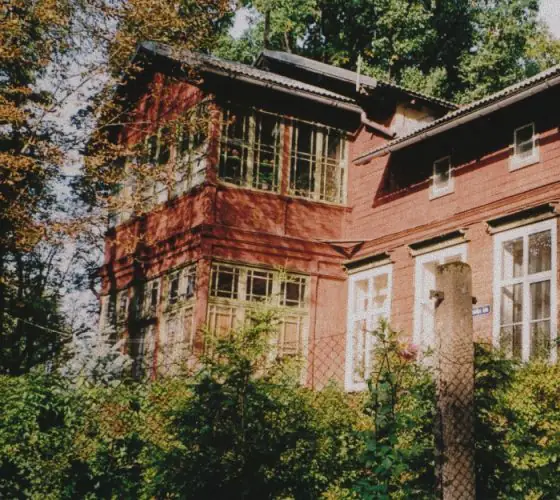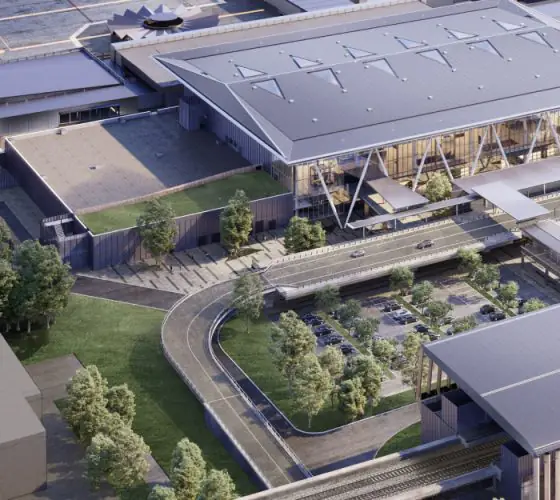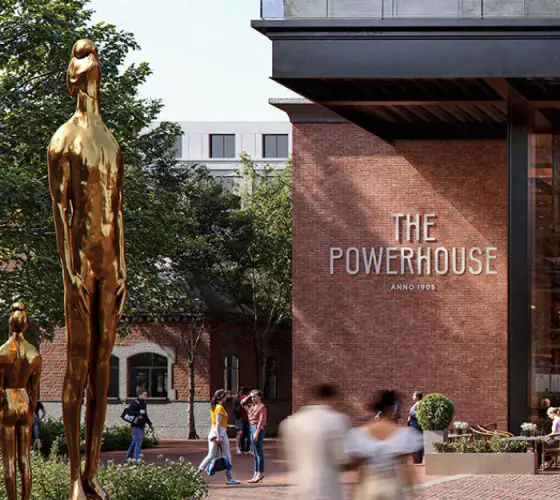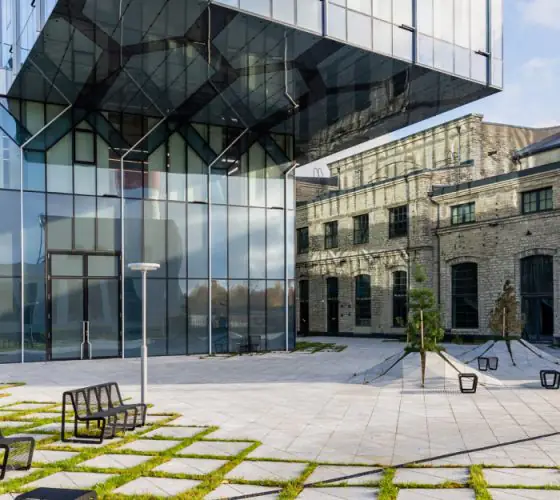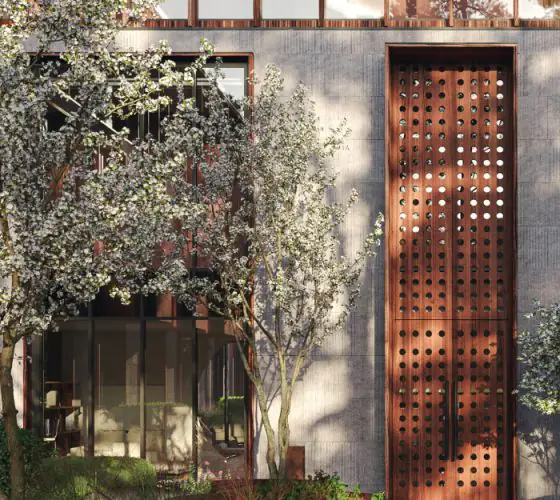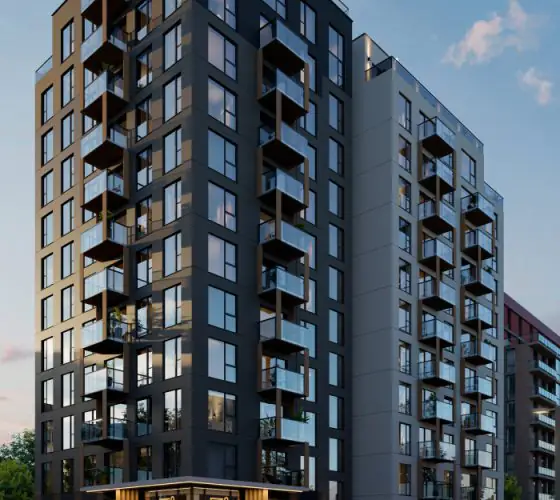Address: Zemitāna iela 9
The Grīziņkalns district is a kind of buffer zone in the east of Riga between the historical center and the buildings of the second half of the 20th century. When the city was actively developing Jugendstil buildings at the beginning of the 20th century, it was a working suburb.
It is now a predominantly residential area with echoes of its industrial past and a still functioning distillery located along the railroad.
The architects from the Open Architecture and Design (OAD) team that developed the project say that every neighborhood deserves its own landmark, and in the case of Grīziņkalns it could be the new Grīziņdārzs quarter with different functions: business and commercial spaces, as well as indoor and outdoor public spaces.
Layouts and Amenities
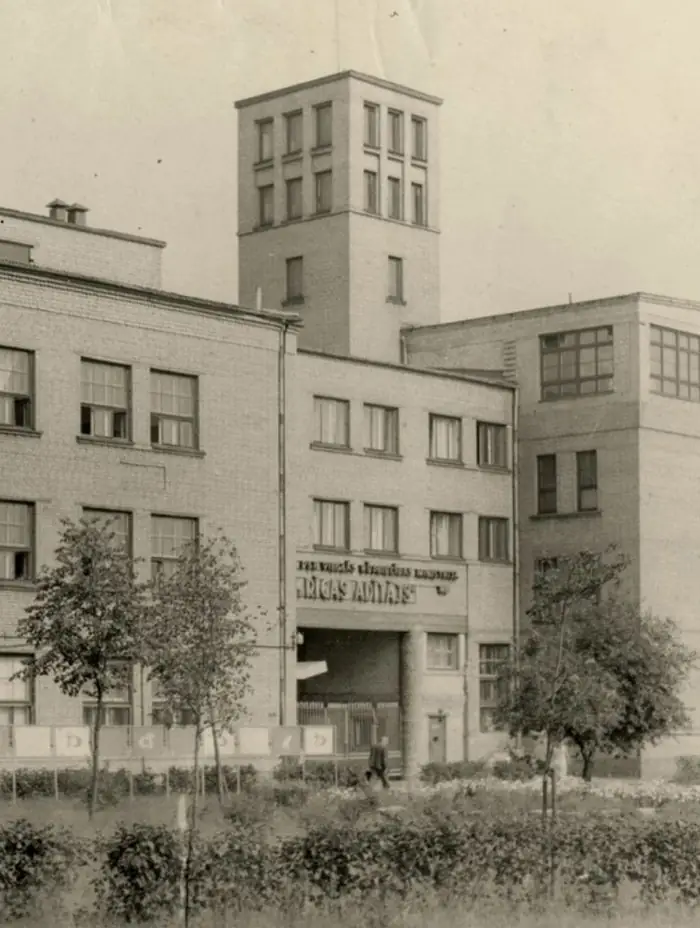
grizindarzs.lv
The knitting factory operated from 1938 to 1988. The factory buildings are preserved as much as possible in the architectural design: the necessary interventions make the buildings resistant to the demands of the modern city, but at the same time emphasize their character. The project of large-scale redevelopment of the territory makes maximum use of its industrial heritage: for example, the water tank located in the courtyard will be transformed into an underground drinking spring. The paving of the sidewalks will resemble knitted patterns.
There are also new buildings in the quarter: the Grīziņdārzs area is located under two bridges, from which a rare view opens up, allowing you to see the quarter from above. The architects took this viewpoint into account and designed the quarter so that the division into old and new parts is visible.
Now two of the eight buildings have been completed: one will be commissioned in 2022 (building No. 3) and the other in 2023 (building No. 4). It is also planned to commission one building at a time in the coming years.
The total area of the eight buildings is 16,675 m². The rental spaces in the buildings have a very wide range of sizes: from 14 m² to 2,000 m². And the large factory windows provide excellent daylight access to these spaces.
The first level of Grīziņdārzs will house bars and restaurants, while the second and third levels will house offices and co-working spaces.
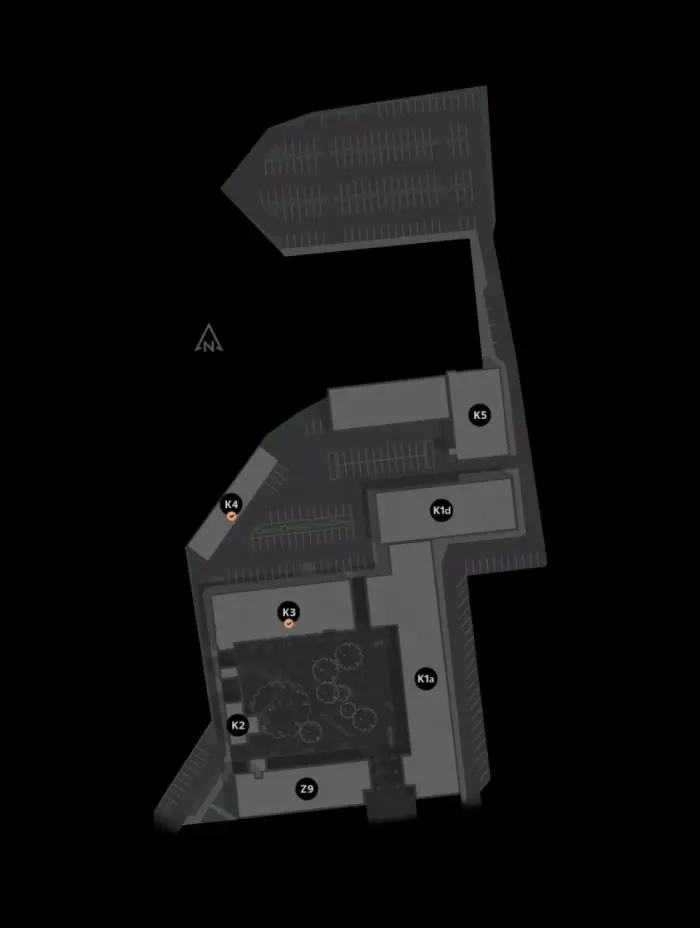
grizindarzs.lv
The owners of Grīziņdārzs are interested in creating the most diverse activity on the territory: they offer rental spaces for large and small teams with different tasks. The buildings provide not only office and exhibition spaces, but also warehouses for those who need to store goods or equipment.
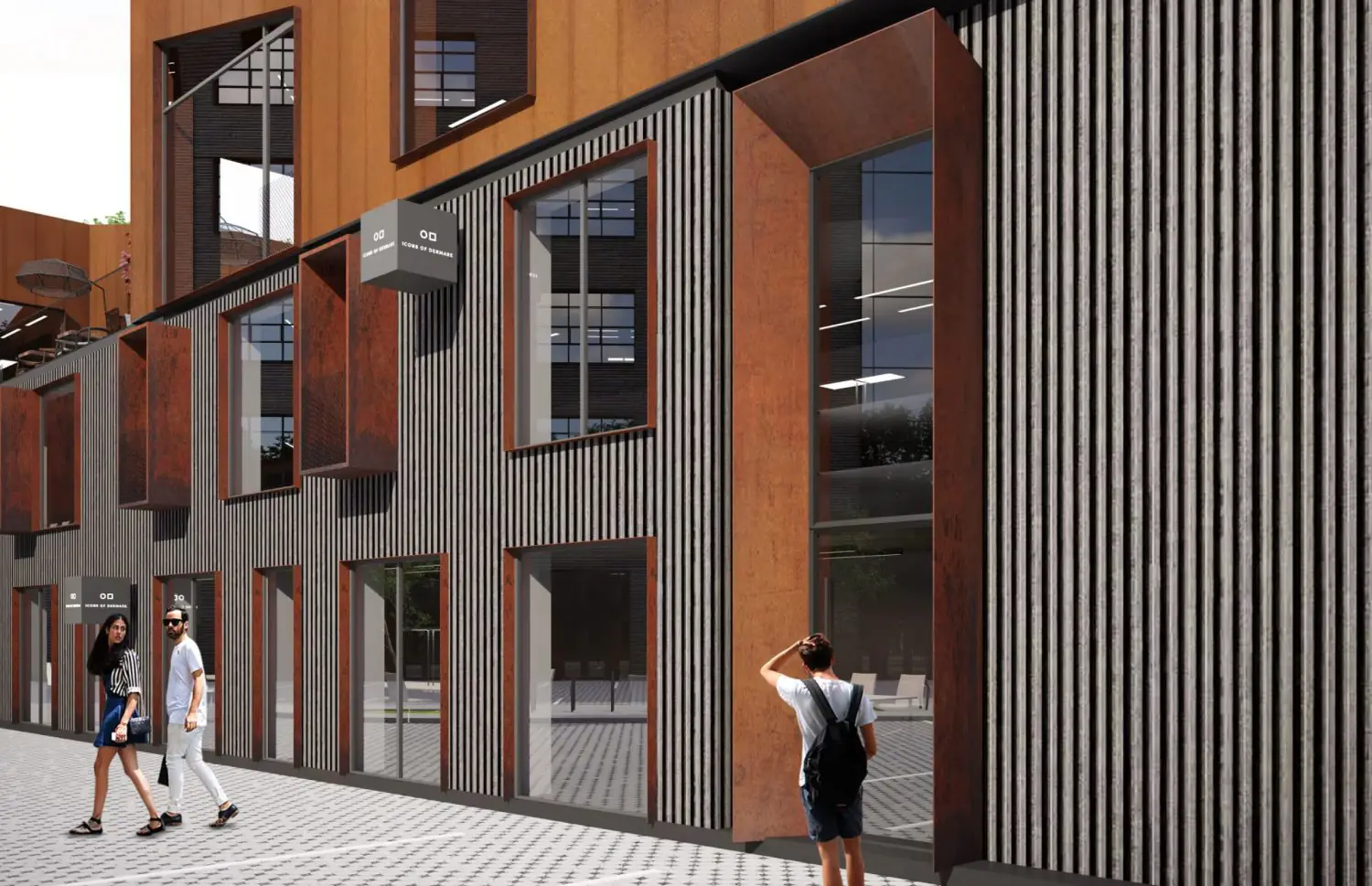
Another important element of the territory is roof terraces: they will distinguish the new buildings from the old ones. This is an important ecological and architectural trend in cities all over the world, from Bangkok to Los Angeles, but in Riga their potential has not yet been realized. In Grīziņdārzs, gardens and roof terraces will appear on the third and fourth floors, so that the employees of the complex can change their office chair for a comfortable outdoor space. There will also be a rooftop bar on the fifth floor, an important place to form strong social bonds. After all, say the project’s creators, the workplace is the space where we spend most of our lives: it should be comfortable.
The neighborhood also plans spaces that increase the productivity and mental health of employees: a gym, a children’s playroom, and a canteen.
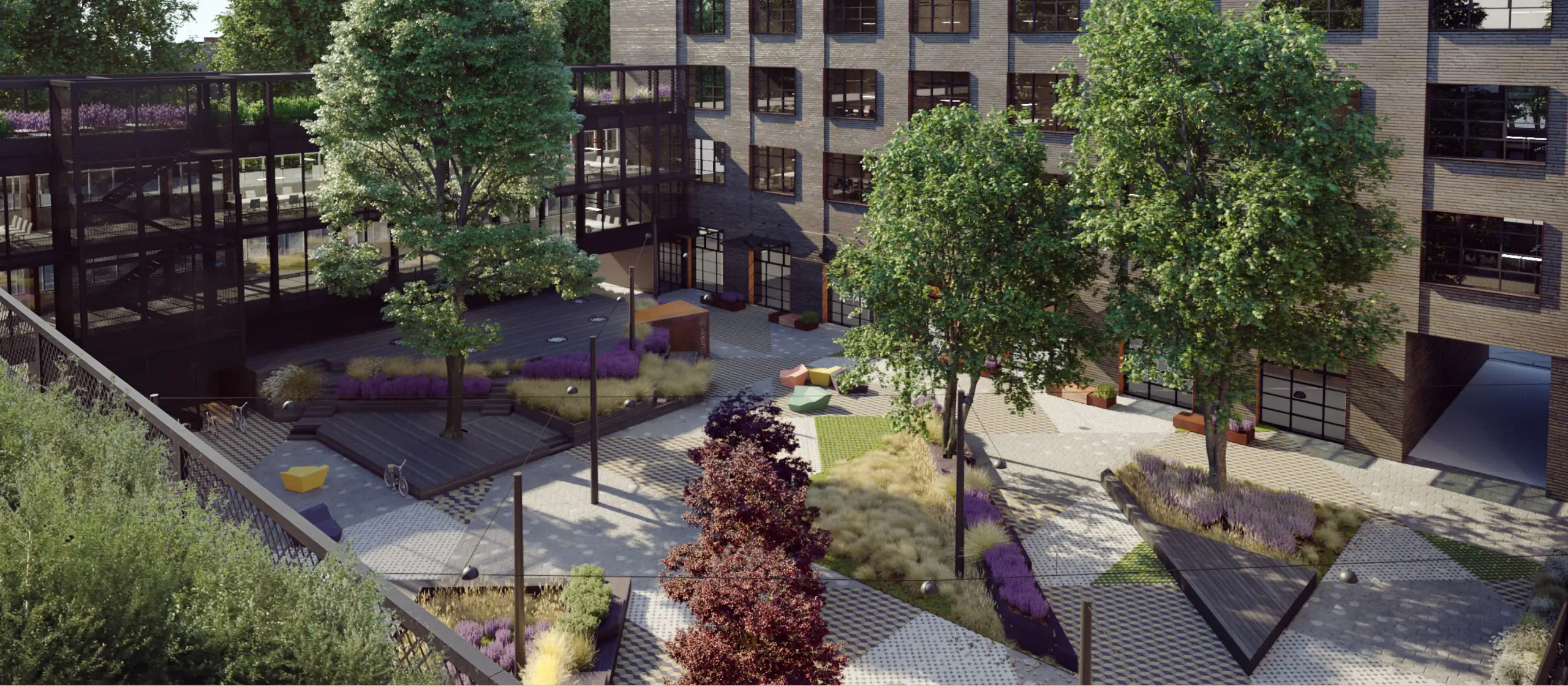
oad.archi
Infrastructure
The developer positions the Grīziņdārzs quarter as a “creative city”: a lively center for residents of the quarter and residents of the surrounding buildings, employees and visitors who come here on foot or arrive by train, bicycle or car. The area will be highly visible from the Zemitāni Bridge: it is envisioned that the quarter will become the neighborhood’s calling card.
The area is planned to have 254 parking spaces for cars, 200 spaces for bicycles and 6 charging stations for electric vehicles.
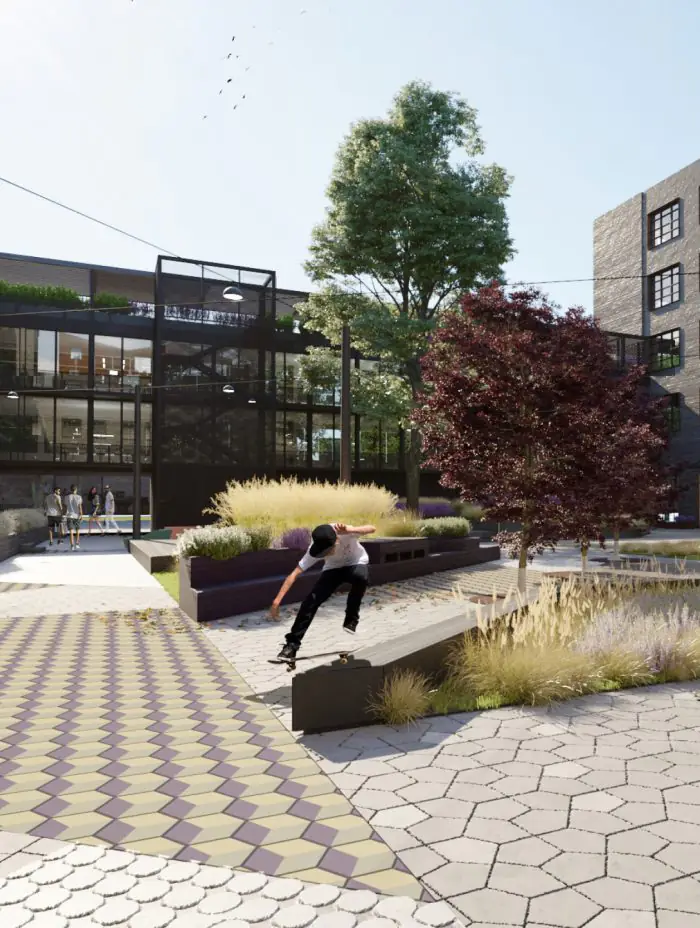
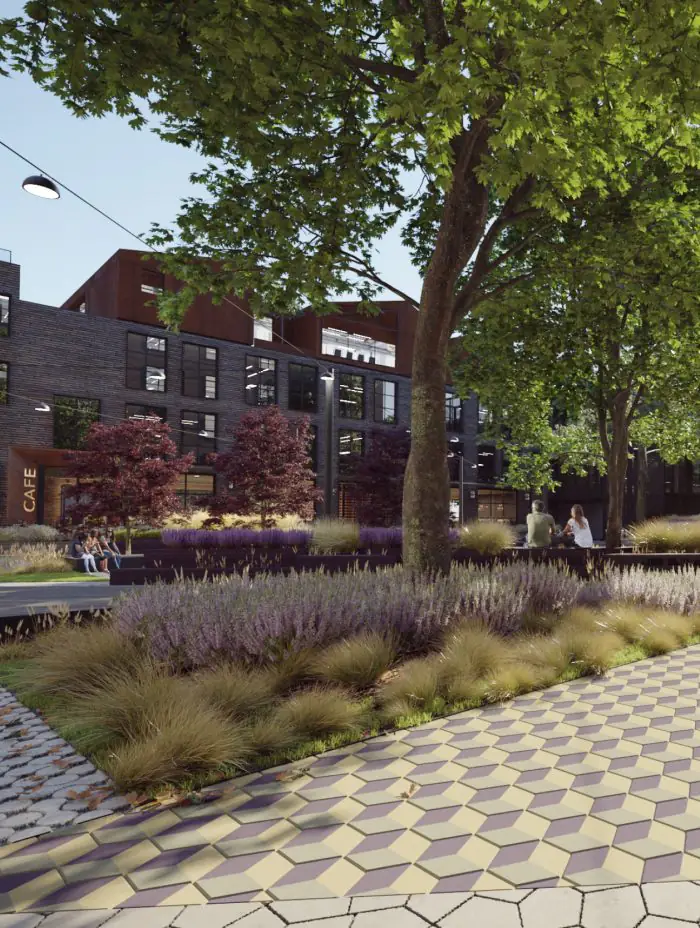

Previously there was a parking lot in the center of the block: after the reorganization of traffic flows and the relocation of parking spaces to the interior of the area, it was possible to create a green space that can be used for recreation or local events: markets, concerts or exhibitions.
The position of the quarter makes it accessible for both public and private transport: for example, it takes about 15 minutes by car to get to the Old Town, railway station or port, and 30 minutes to the airport. Grīziņkalna parks are also within a 15-minute walk.
Energy Efficiency
The idea of reusing existing buildings and areas is already deeply ecological: demolishing and constructing new buildings is almost always more expensive than adapting existing buildings, and more damaging to the environment.
The revitalization of the factory territory has a cultural dimension as well: the team of developers and architects preserves the historical spirit of the district, tells about the industrial heritage of Riga, and at the same time breathes new life into this location, making it visible and in demand in the city. The aim of the project is not only to create spaces for business, but also to create a cultural and possibly even artistic environment.
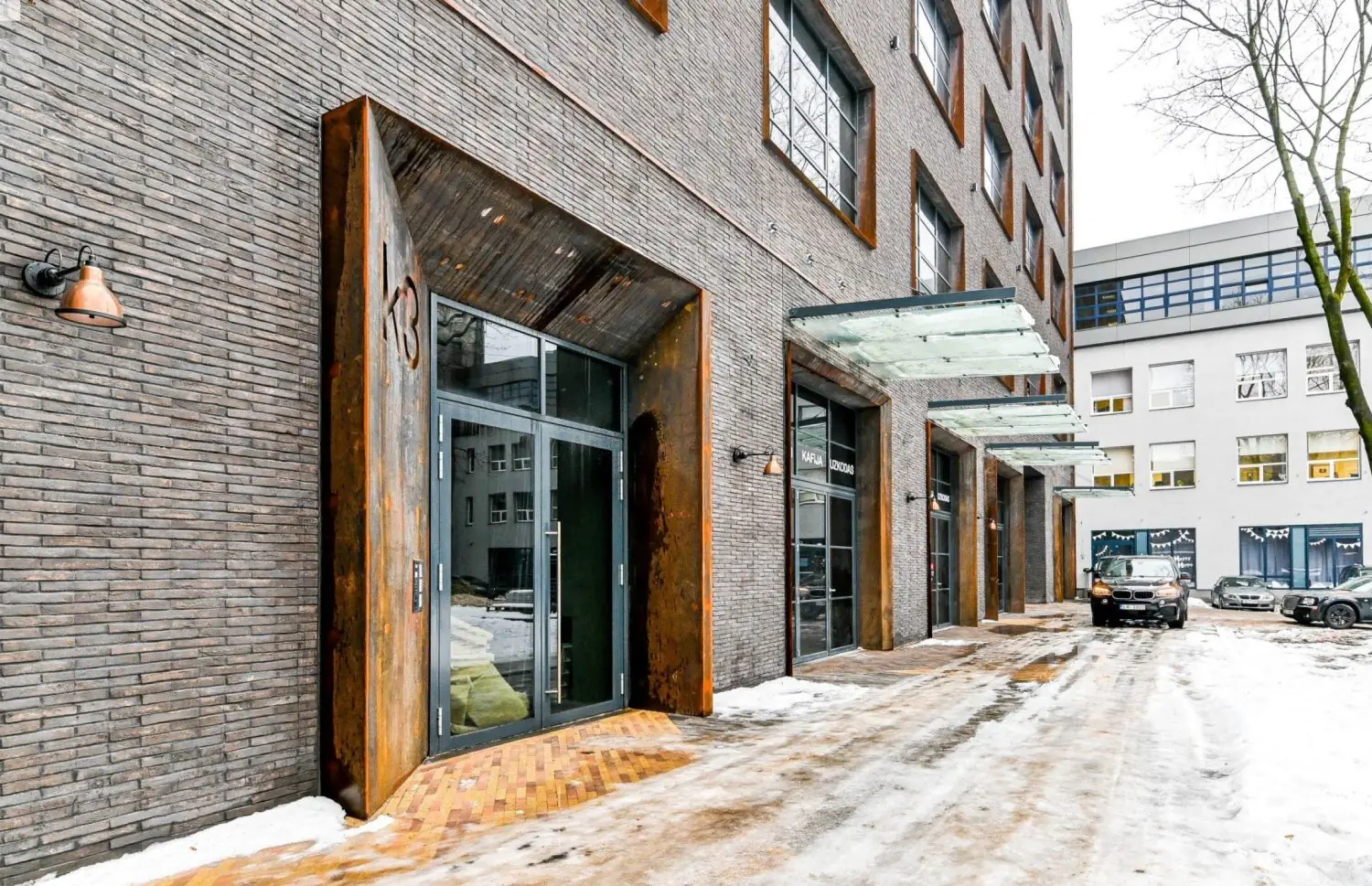
kivi.lv
The buildings are being designed using BIM technologies, which will then allow the use of BMS (Building Management Systems) to manage all the engineering systems and significantly reduce the cost of operation and the risks of any accidents and malfunctions.
The variety of functions should make the neighborhood in demand at different times of the day and in different seasons: 24/7 urban areas are an efficient and therefore sustainable solution.

grizindarzs.lv
Prices
The minimum lease term for all commercial premises is one year. The rent per square meter varies from €7 to €11 depending on the size of the rented premises. A management fee of €2 per m² must also be added to the cost per square meter.

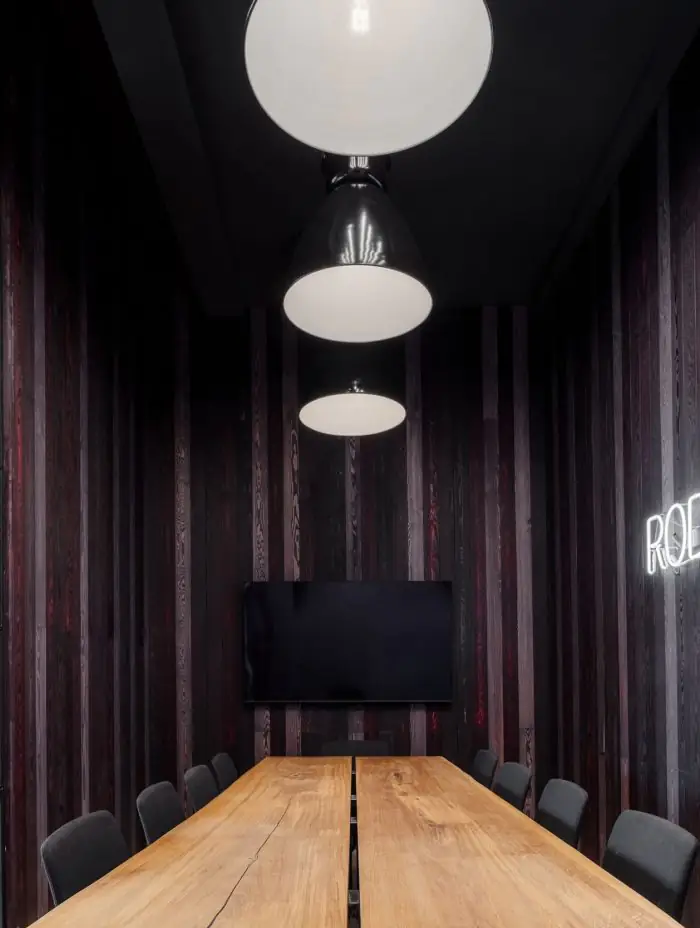

Small offices
15–40 m²
Price: 7–8 €/m²
Medium offices
50–150 m²
Price: 7–10 €/m²
Large offices
200–4000 m²
Price: 9–11 €/m²
Commercial premises
100–500 м²
Price: 10–11 €/m²
Read more about the terms and conditions and rental options on the company’s website.
Project Team
The developer of the project is RA Invest, an experienced developer working in the commercial real estate sector since 2000.
The architecture of the project is the responsibility of the Open Architecture and Design (OAD) bureau headed by Zane Tetere-Sulce.


